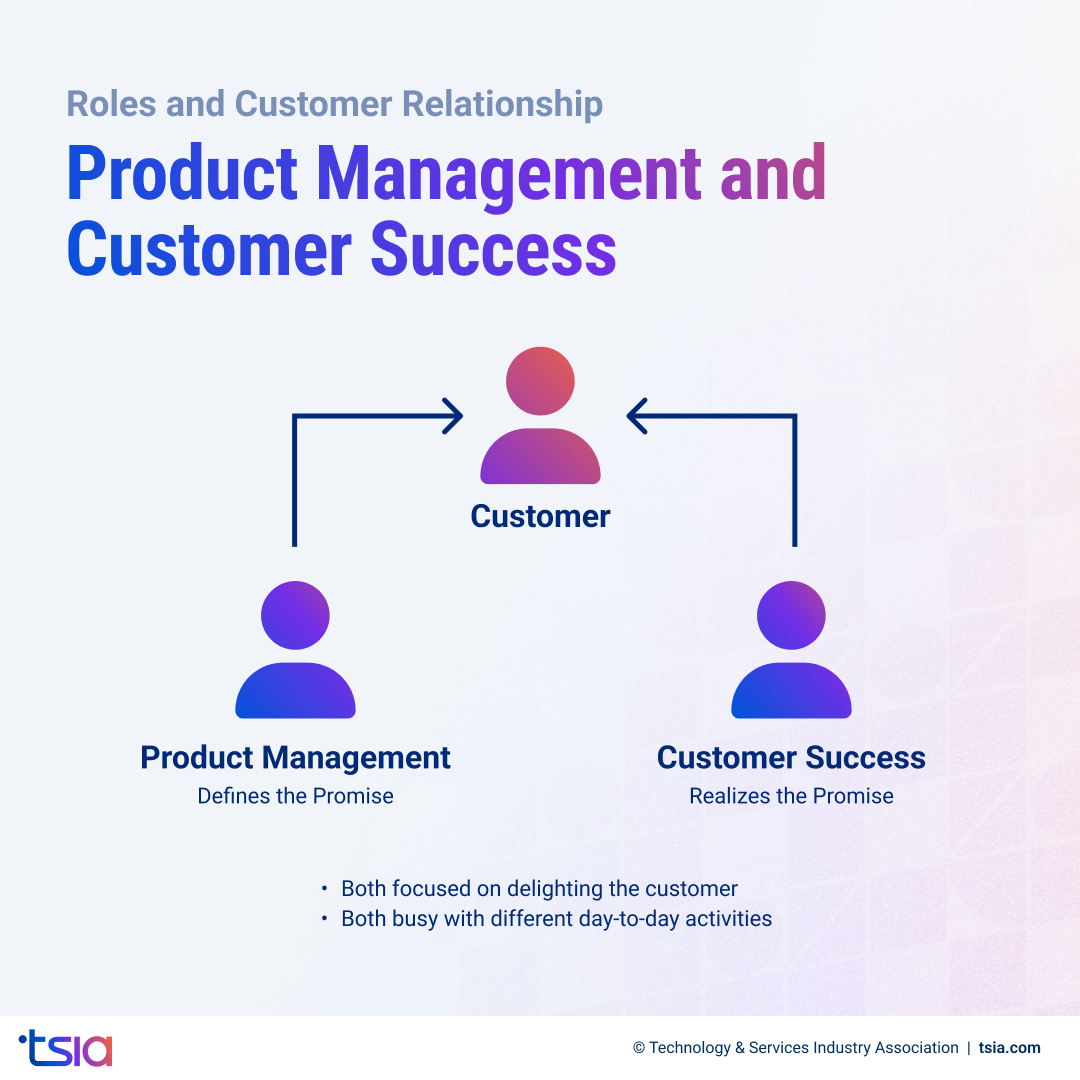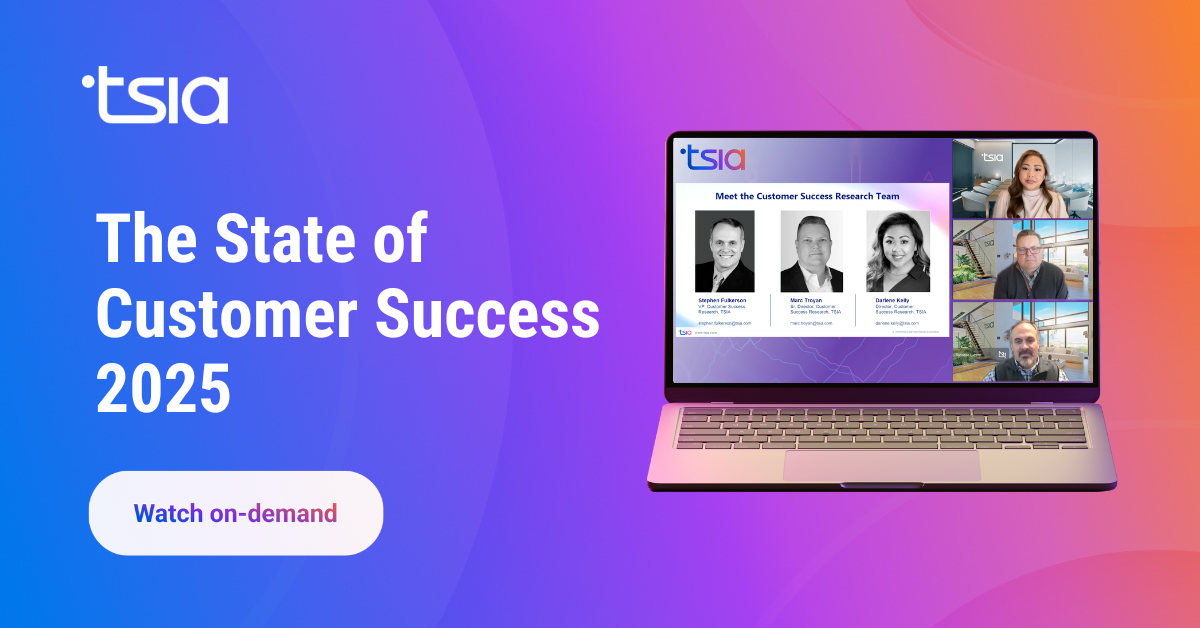If you’ve ever felt the disconnect between your customer success and product management teams, you’re not alone. Both play critical roles in delivering on the promises your company makes to customers—yet, too often, they operate in silos. When collaboration is weak, customers feel it: adoption stalls, feedback loops break down, and value delivery becomes inconsistent.
When customer success and product management work hand in hand, however, the outcome is powerful. You gain better products, more informed customer experiences, and higher adoption rates. In this blog, we’ll explore three essential steps you can take to strengthen the relationship between these two functions and drive long-term value for your customers.
Key Takeaways
- Shared adoption goals help align customer success and product management around what truly matters: customer outcomes.
- An adoption framework provides structure to measure usage, stickiness, and business value.
- A standard customer journey map ensures both teams have visibility into the customer experience and can act on insights together.
Bringing Customer Success and Product Management Together
Your customers don’t see your organizational chart. What they experience is the product itself—and how well it helps them achieve their goals. Product management defines what’s promised; customer success ensures that promise is realized.

When these teams collaborate, you:
- Collect and use product usage data more effectively.
- Design better features with customer feedback in mind.
- Ensure adoption is not just measured, but actively improved.
Without collaboration, these opportunities are missed. Research shows that organizations with low engagement between product and customer success also have the lowest levels of adoption practices and usage instrumentation. In other words, working separately costs you both customer trust and revenue growth.
Related: Customer Success–Product Management Handshake: A Conversation with Cisco
Step 1: Establish Shared Adoption Goals
Adoption is the new scorecard for recurring revenue businesses. If your customers aren’t actively using your solutions—and using them effectively—they won’t renew or expand.
Yet in many organizations, product management and customer success don’t share adoption goals. TSIA research shows that fewer than 30% of companies report having aligned targets. Those that do, however, are more likely to engage in best practices like co-creating the user experience, improving onboarding, and designing effective adoption plans.
For you, that means setting adoption goals that both teams own together. Instead of treating adoption as, “just a customer success metric,” make it a joint responsibility. When product managers and customer success managers (CSMs) are aligned, adoption becomes a priority for everyone, and the customer benefits.
Related Podcast Episode: Adoption Aptitude
Step 2: Operationalize an Adoption Framework
Having adoption goals is only the beginning—you need a framework to measure and act on them. TSIA’s Adoption Framework identifies three key attributes that show whether customers are moving from low to effective adoption:
- Who: Are the right people using the product?
- Quantity: How often and how deeply are they using it?
- Stickiness: Are they using the features that deliver lasting value?
As customers progress, additional measures like data quality, efficiency, and business outcomes become essential indicators of effective adoption.
By operationalizing an adoption framework, you create a shared language for customer success and product management. Your customer success team gains the telemetry they need to engage customers more effectively, while your product team gets insights to guide roadmap priorities. Together, this closes the loop between product design and customer value, leading to effective adoption and more recurring revenue.

Step 3: Create a Common Customer Journey Map
To deliver on customer expectations, you need to understand the customer journey from their perspective—not just your internal processes. A journey map documents how customers interact with your people, products, and services, highlighting key touchpoints and emotional responses along the way.
When customer success and product management collaborate on journey mapping, they develop a shared understanding of where customers succeed and where friction occurs. This collaboration drives better outcomes, including:
- Faster time-to-value for customers.
- More prescriptive playbooks and success plans.
- Higher retention rates and stronger adoption.
Too often, product management is underrepresented in this process. By including both teams—and even customers themselves—you gain the insights needed to improve not only the journey, but also the product itself.
Related: Creating a Customer Journey that Maps to Success
Make Customer Success and Product Management Work as One
Your product management and customer success teams both carry the weight of your company’s promises to customers. Separately, they can only do so much. Together, they ensure that your product delivers value, customers achieve outcomes, and your business thrives in the subscription economy.
By setting shared adoption goals, creating a structured adoption framework, and mapping the customer journey as one team, you can transform collaboration into measurable results.

FAQs
How does a product manager (PM) contribute to the success of both the customer and the customer success team?
A product manager supports the customer success team by providing a product designed for adoption and long-term value, sharing the product roadmap, and acting on feedback to make their job easier. For the customer, a PM ensures the product is easy to use, solves the right problem, and continuously evolves with their needs.
Why is it essential for product managers and customer success teams to collaborate?
Collaboration between product and customer success teams helps drive product-led growth. The product team understands what to build, but the customer success team understands how customers are actually using it—and where they are struggling.
What is the product manager's primary responsibility in customer success overall?
A product manager’s primary responsibility is to ensure the product delivers on its promises and helps customers achieve their desired outcomes. By building a product that is intuitive, effective, and solves a real problem, the PM sets the foundation for customer success. This includes everything from the initial user experience to the functionality of new features.
Smart Tip: Embrace Data-Driven Decision Making
Making smart, informed decisions is more crucial than ever. Leveraging TSIA’s in-depth insights and data-driven frameworks can help you navigate industry shifts confidently. Remember, in a world driven by artificial intelligence and digital transformation, the key to sustained success lies in making strategic decisions informed by reliable data, ensuring your role as a leader in your industry.
















